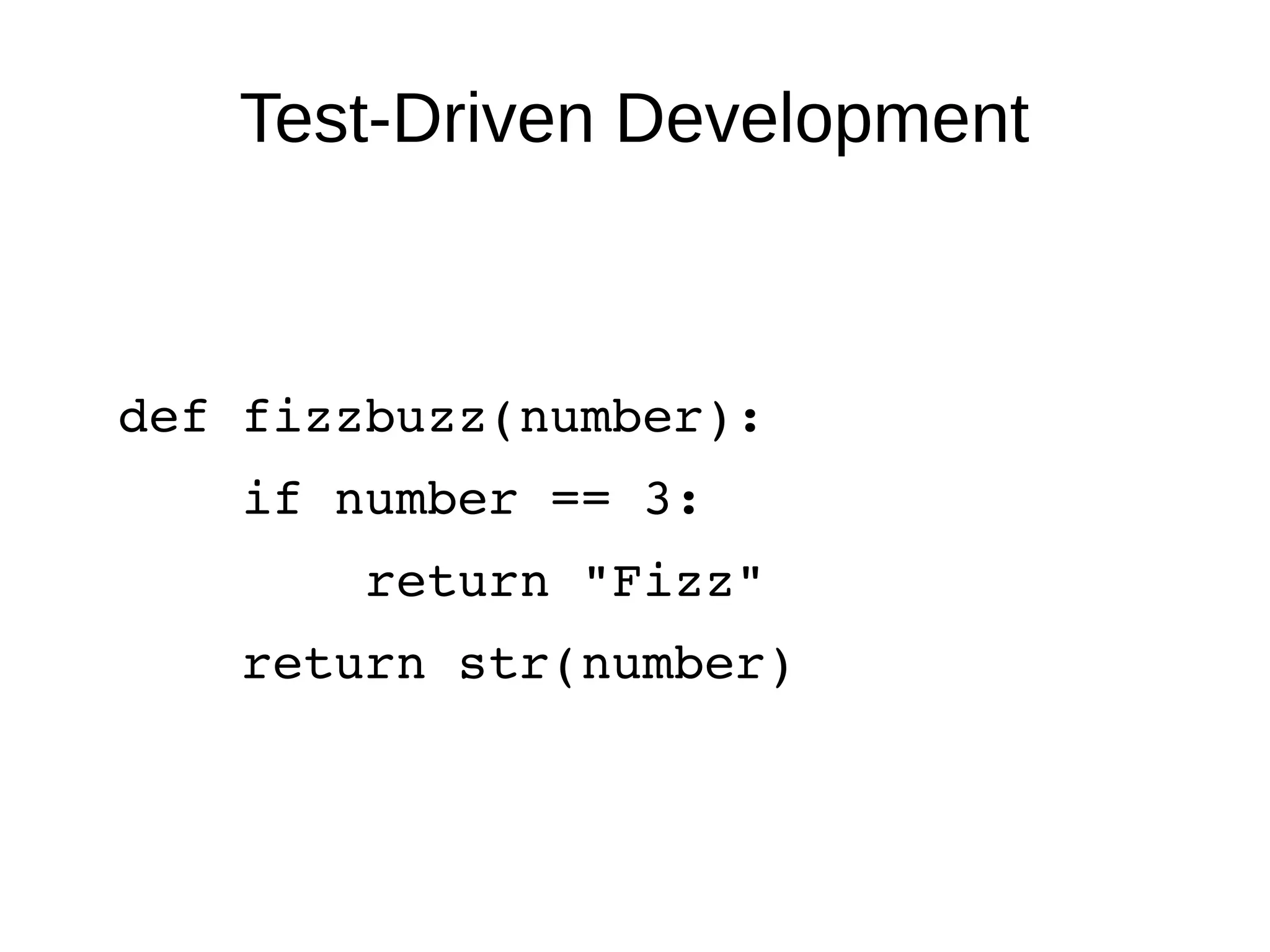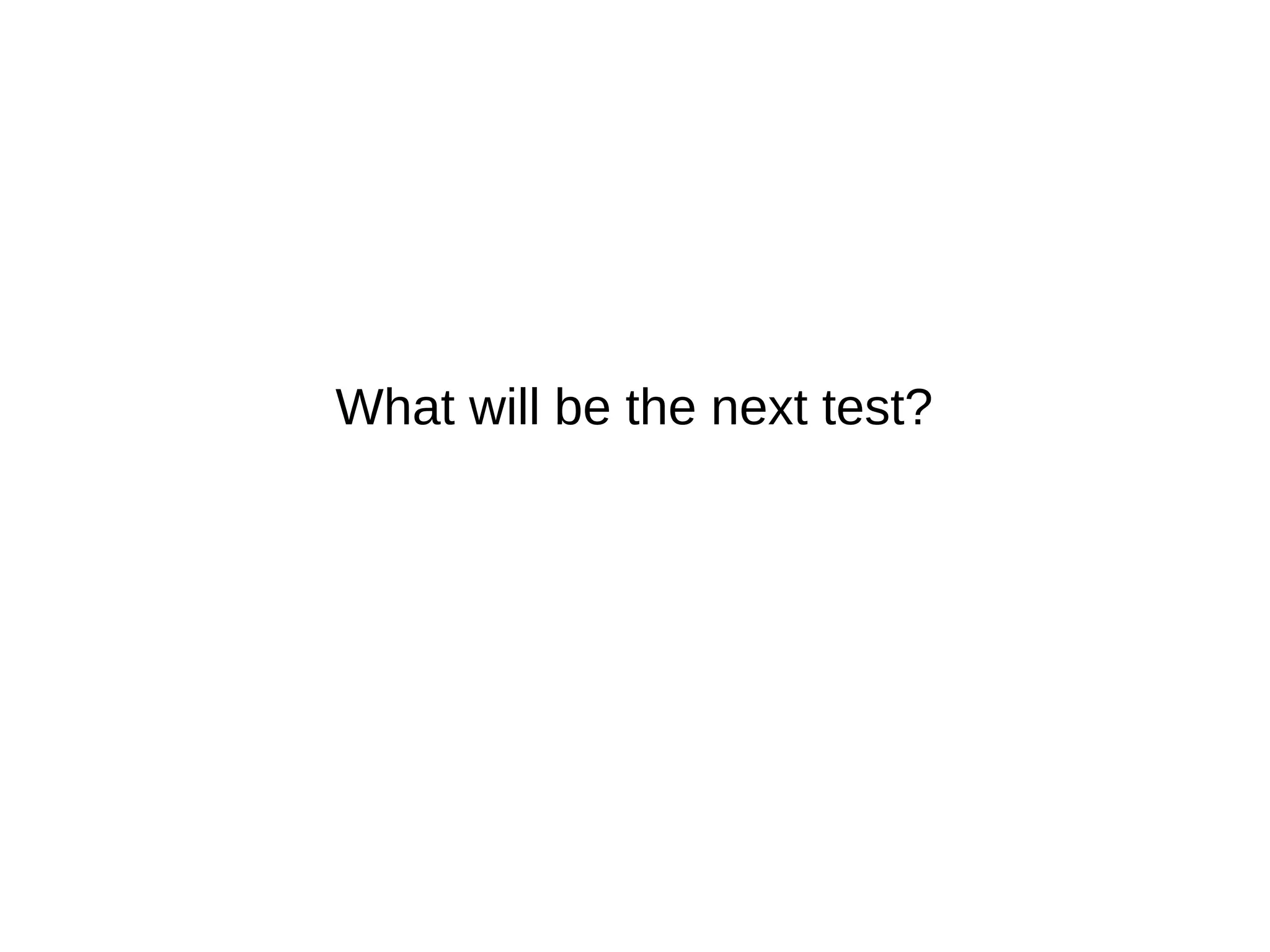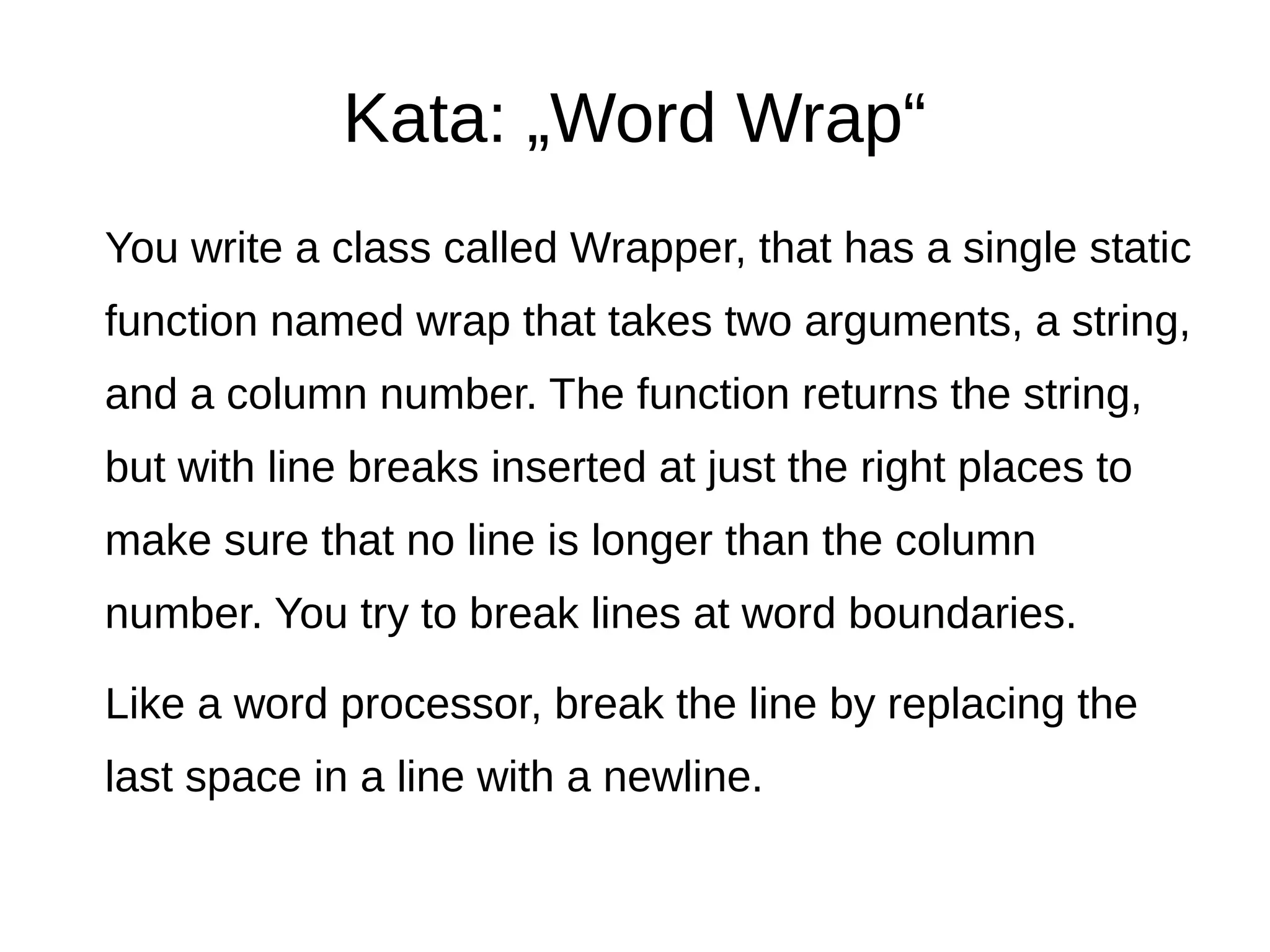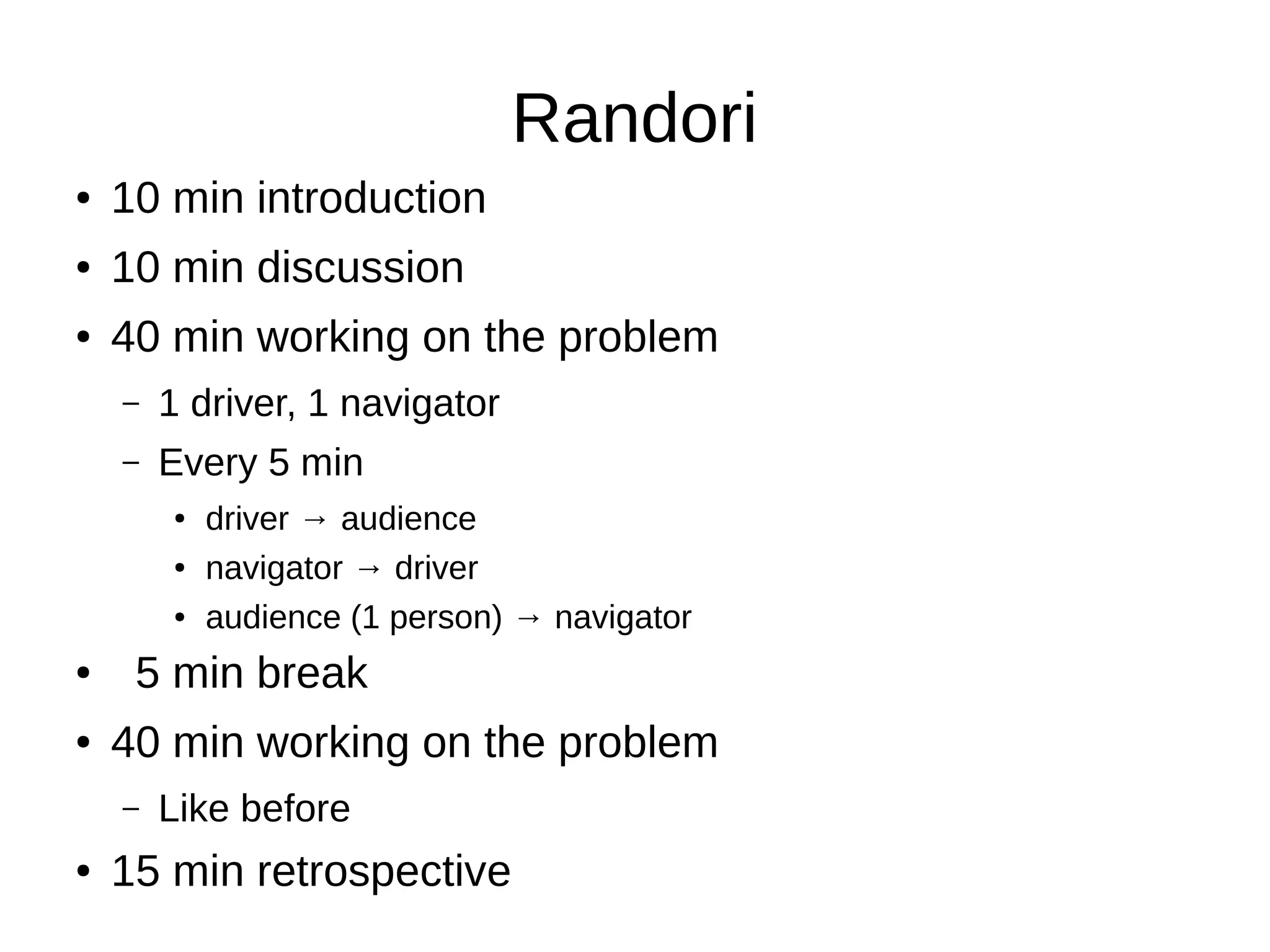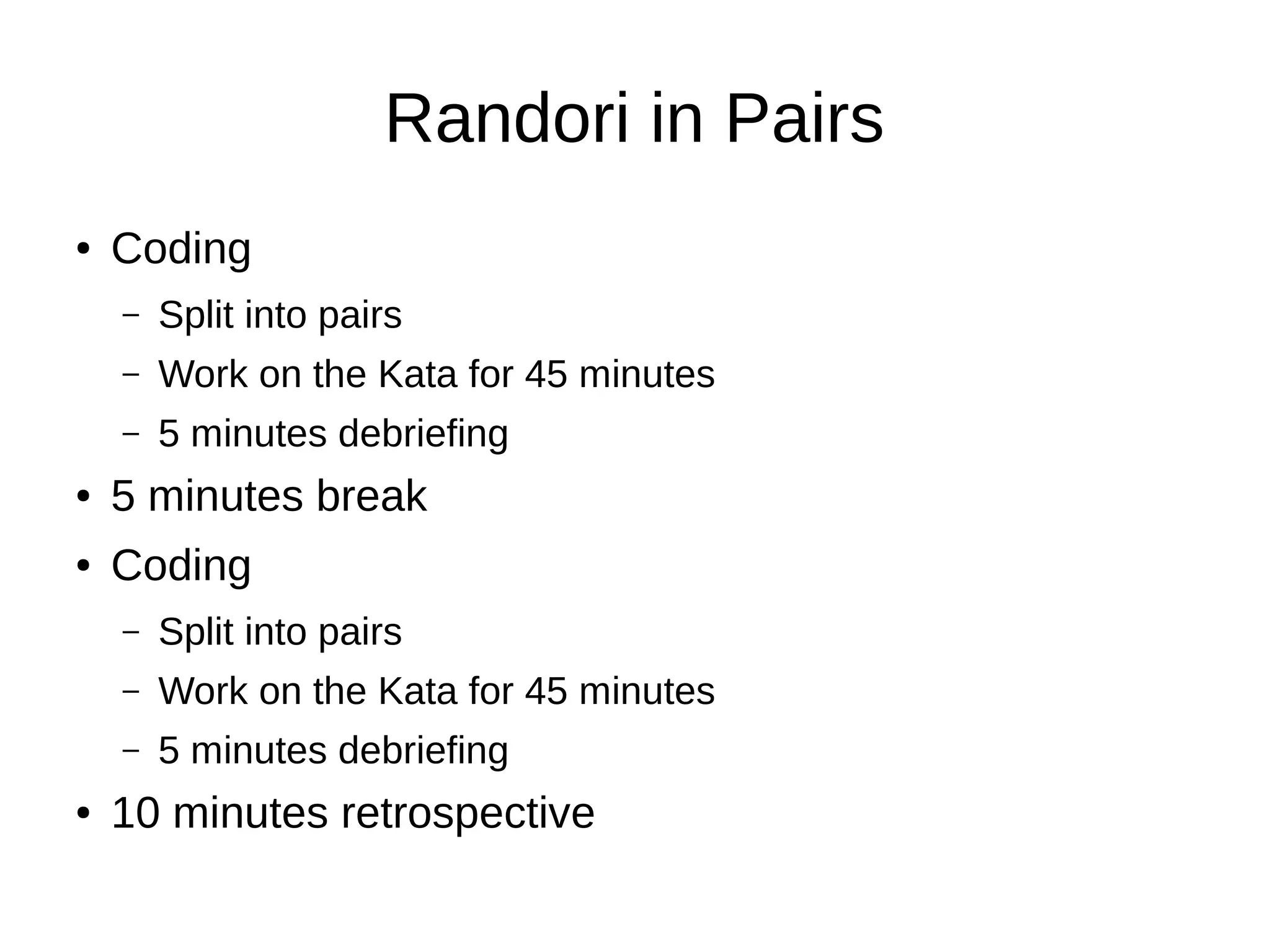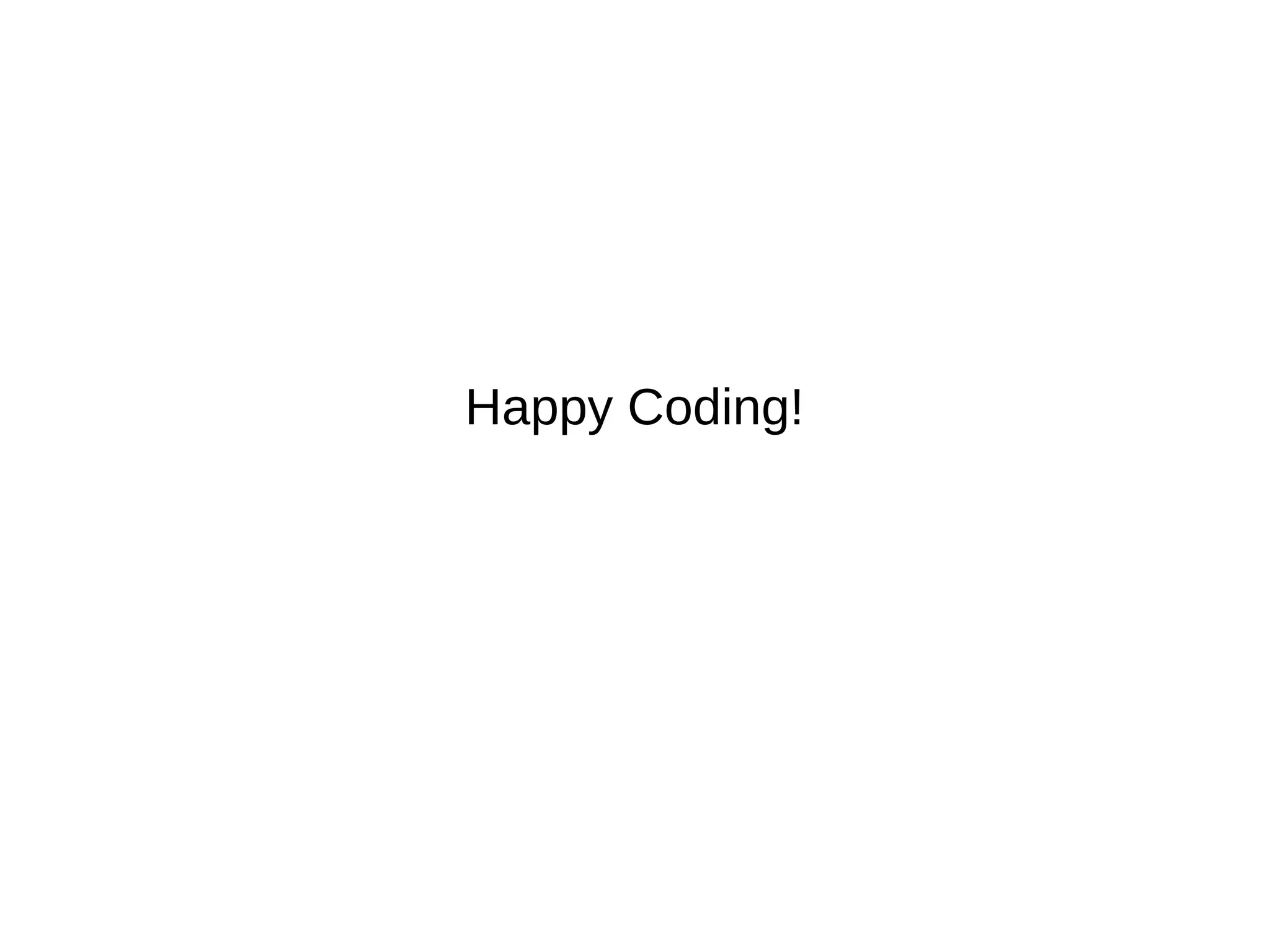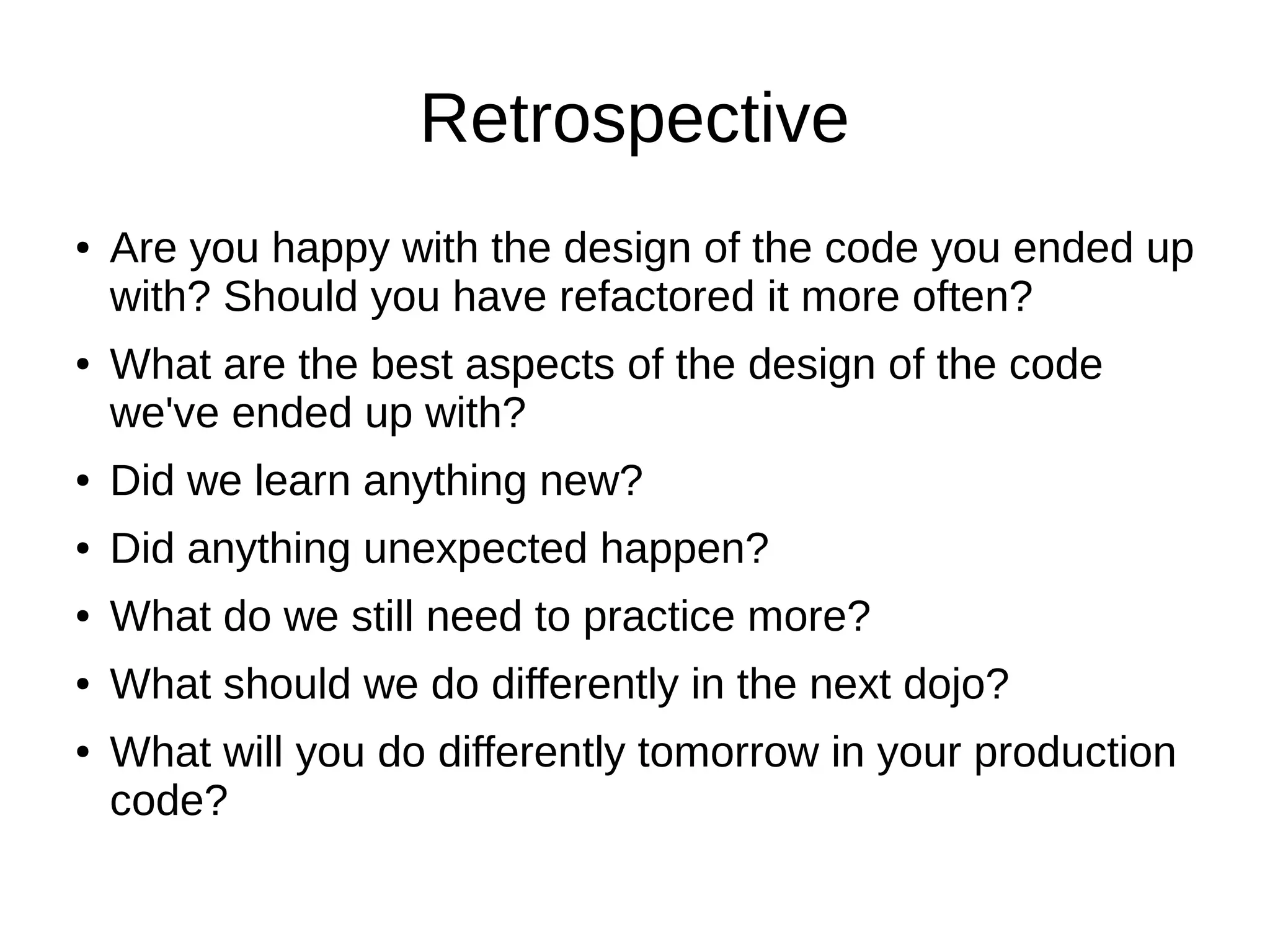The document summarizes a Python coding dojo event that covered test-driven development and pair programming techniques. Attendees learned about TDD processes like writing tests first, red-green-refactor cycles, and practiced pair programming and switching roles frequently. They worked on a "word wrap" coding kata exercise in pairs using TDD and discussed reflections on the design of their code solutions and lessons learned at the end.

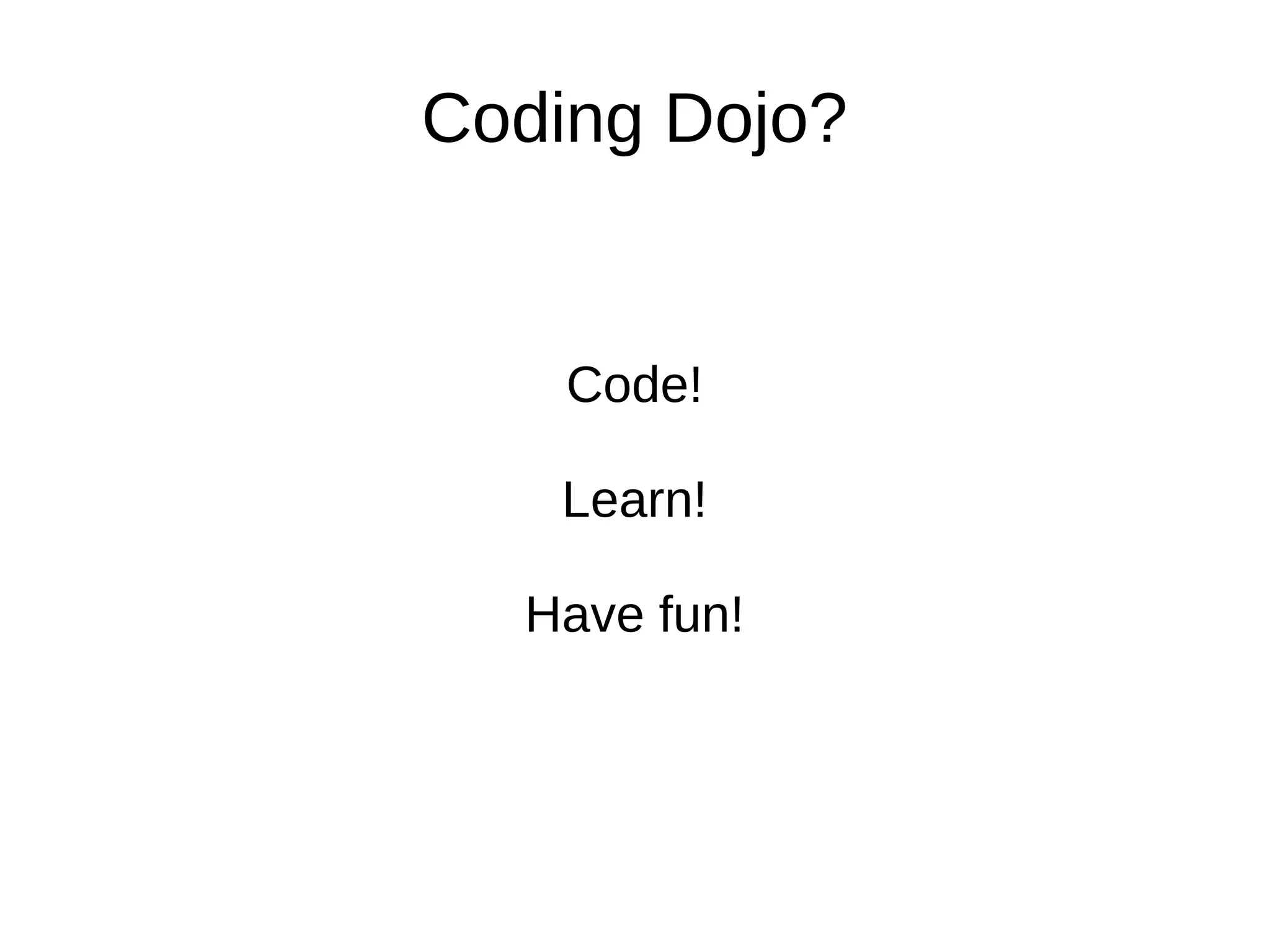
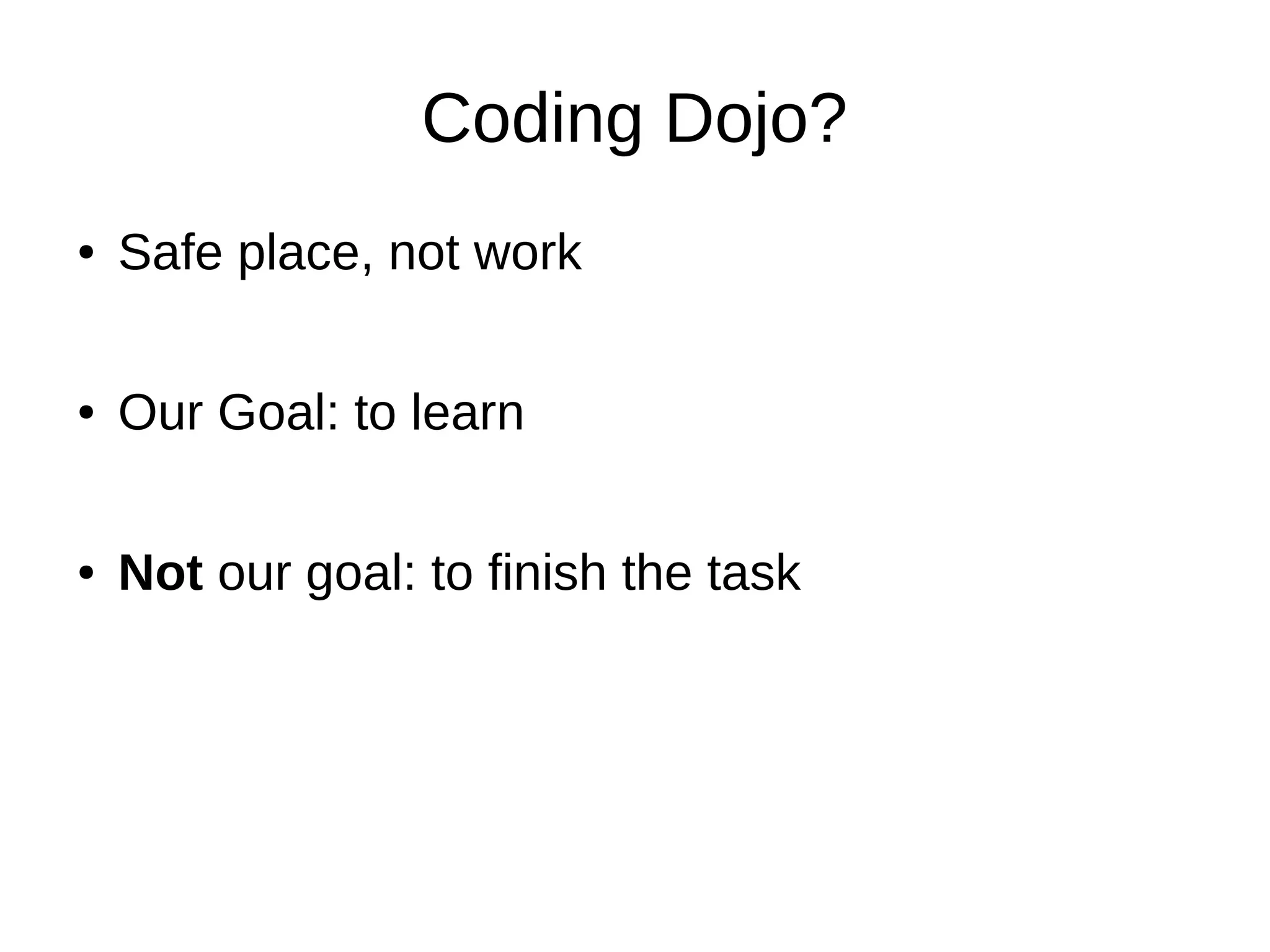
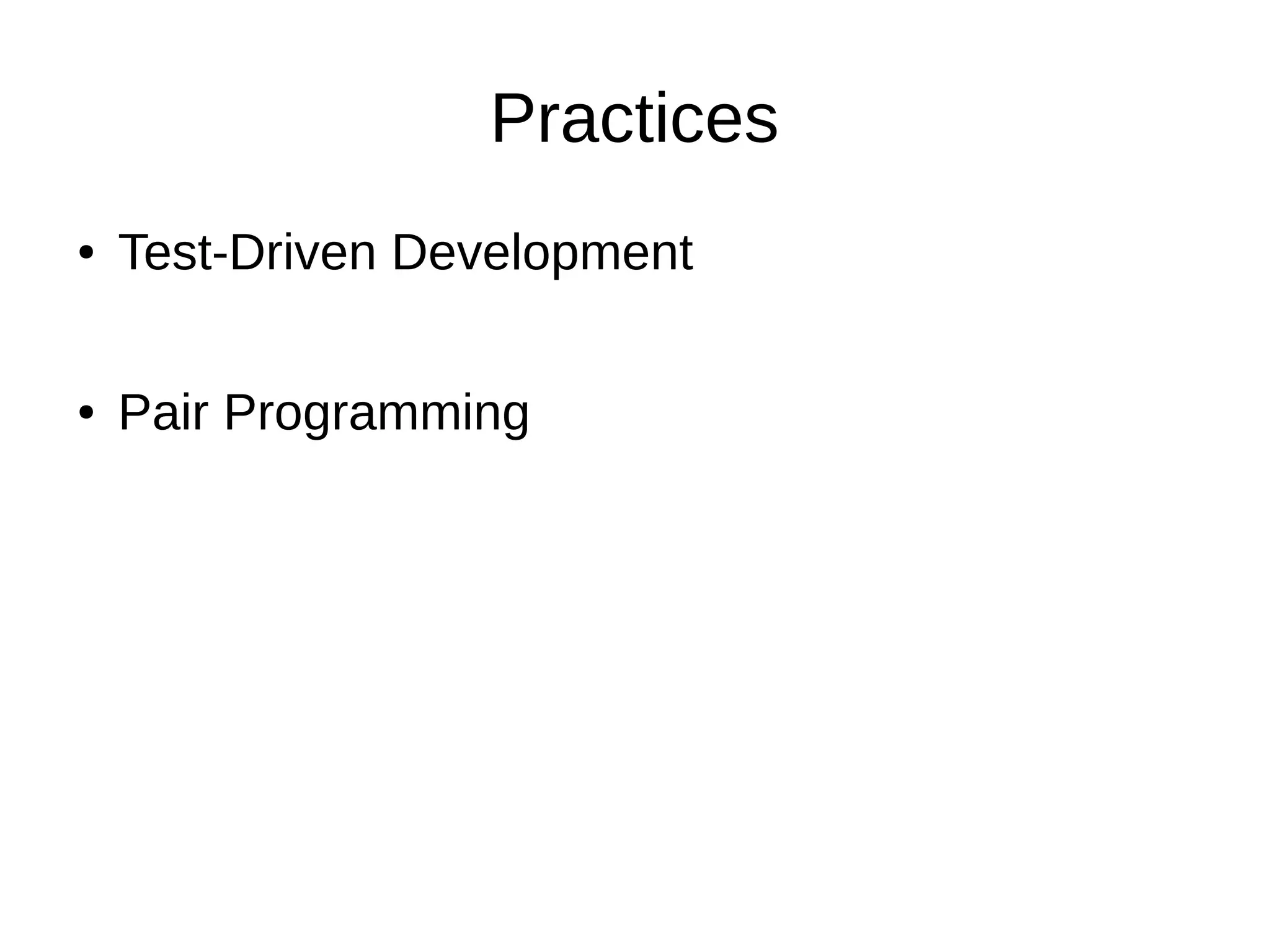
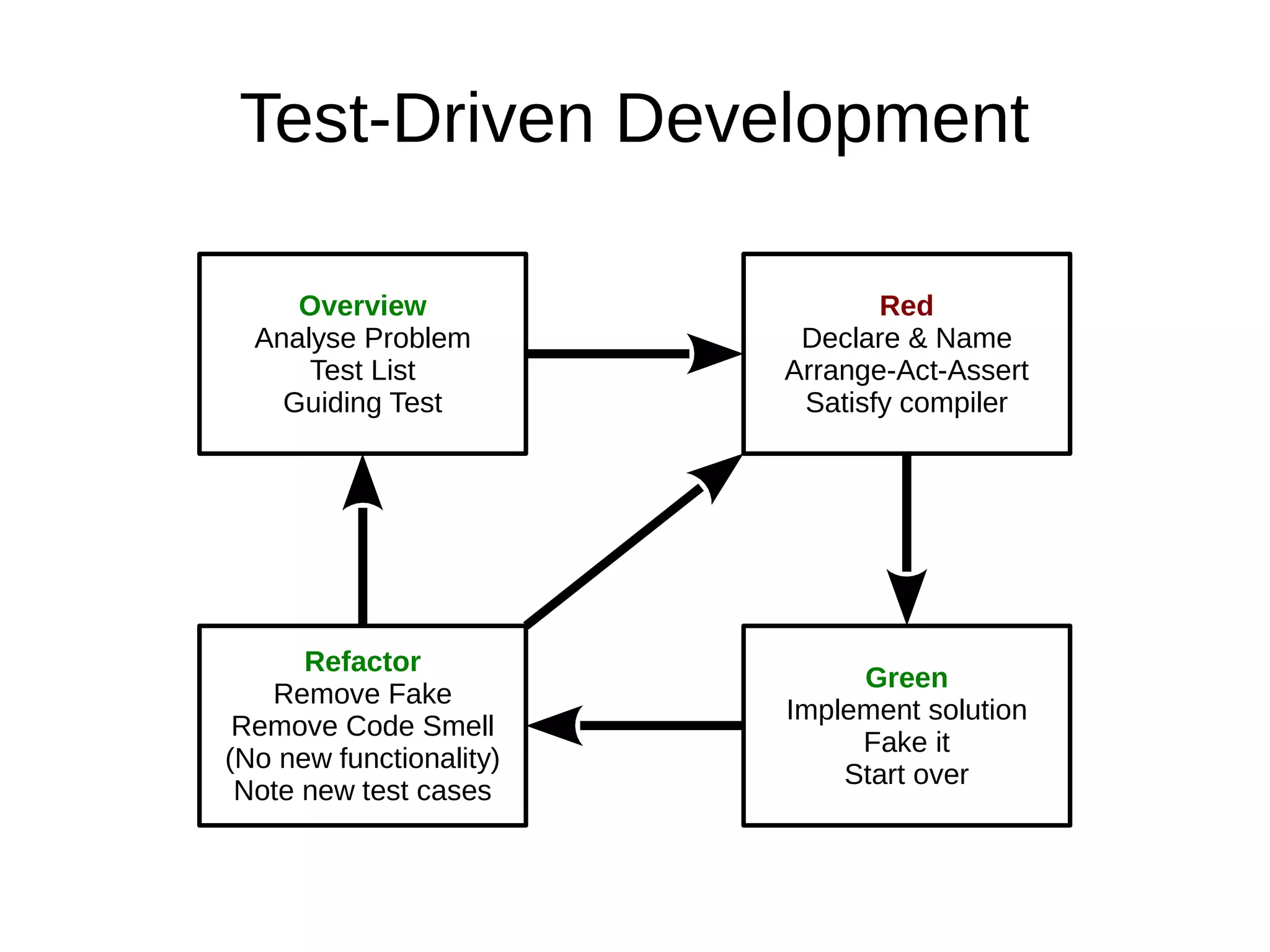
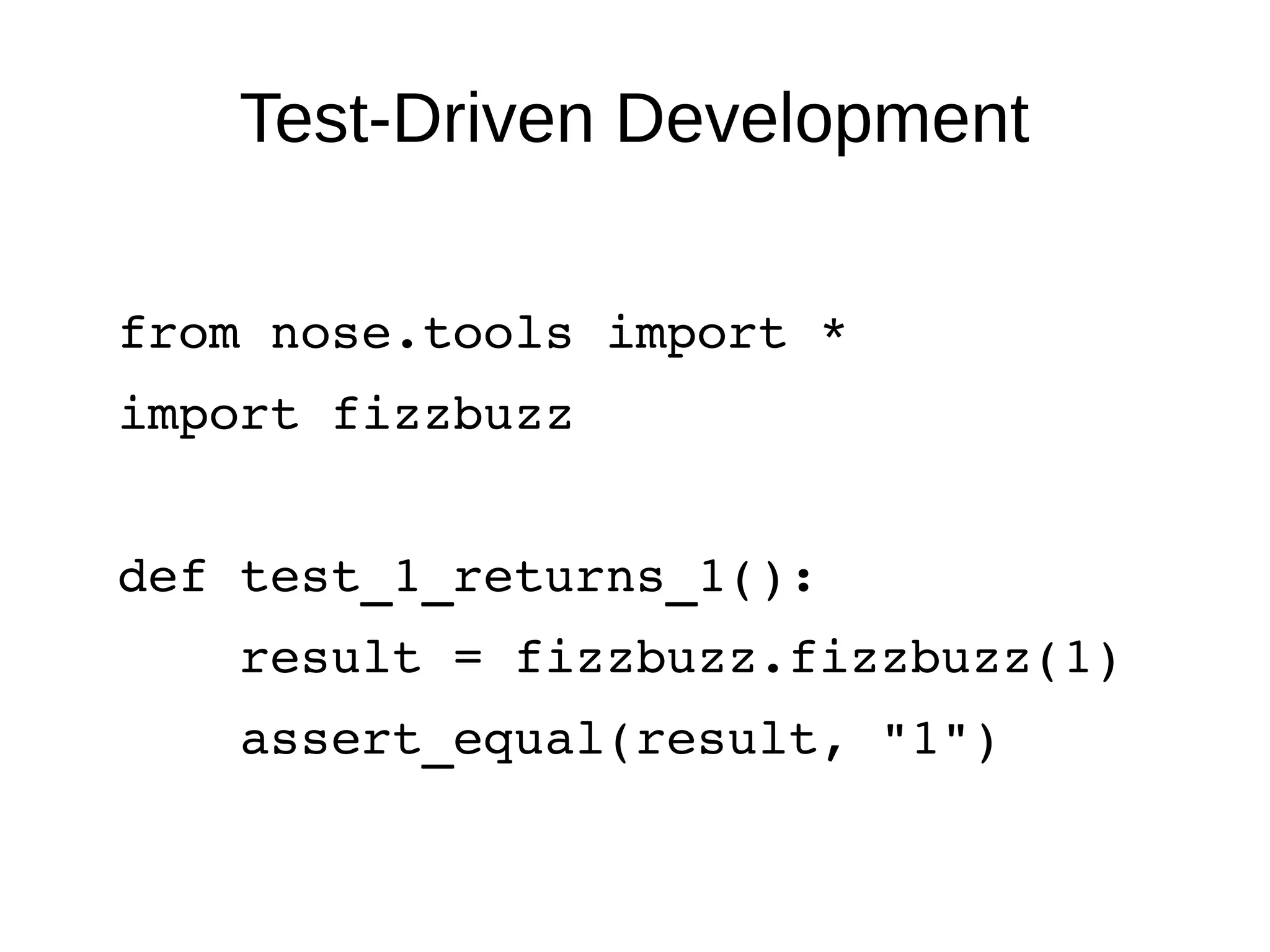
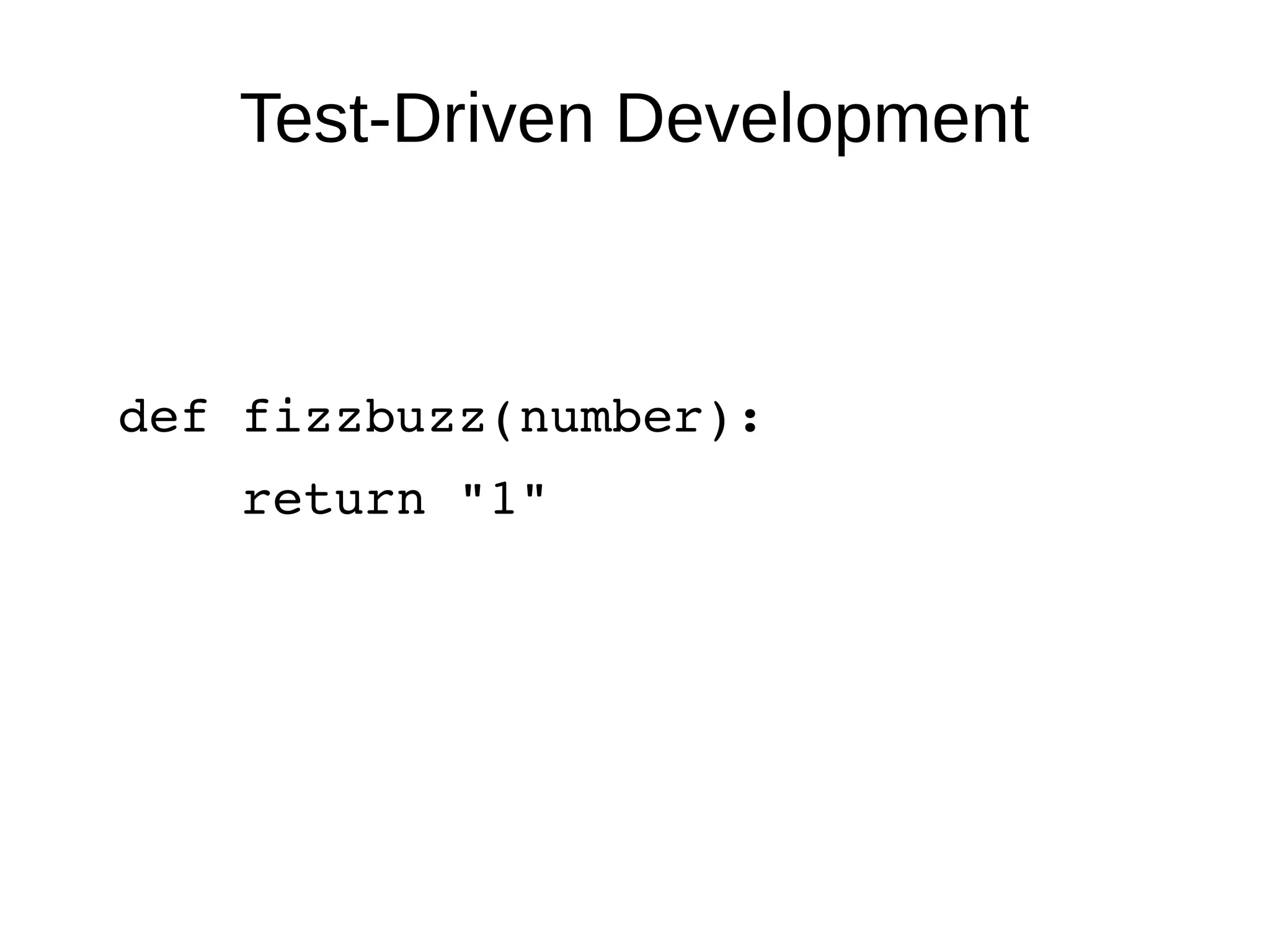
![Test-Driven Development
[…]
def test_2_returns_2():
result = fizzbuzz.fizzbuzz(2)
assert_equal(result, "2")](https://image.slidesharecdn.com/2014-03-19-pythoncodingdojo-140318160707-phpapp01/75/Python-Coding-Dojo-2014-03-19-8-2048.jpg)
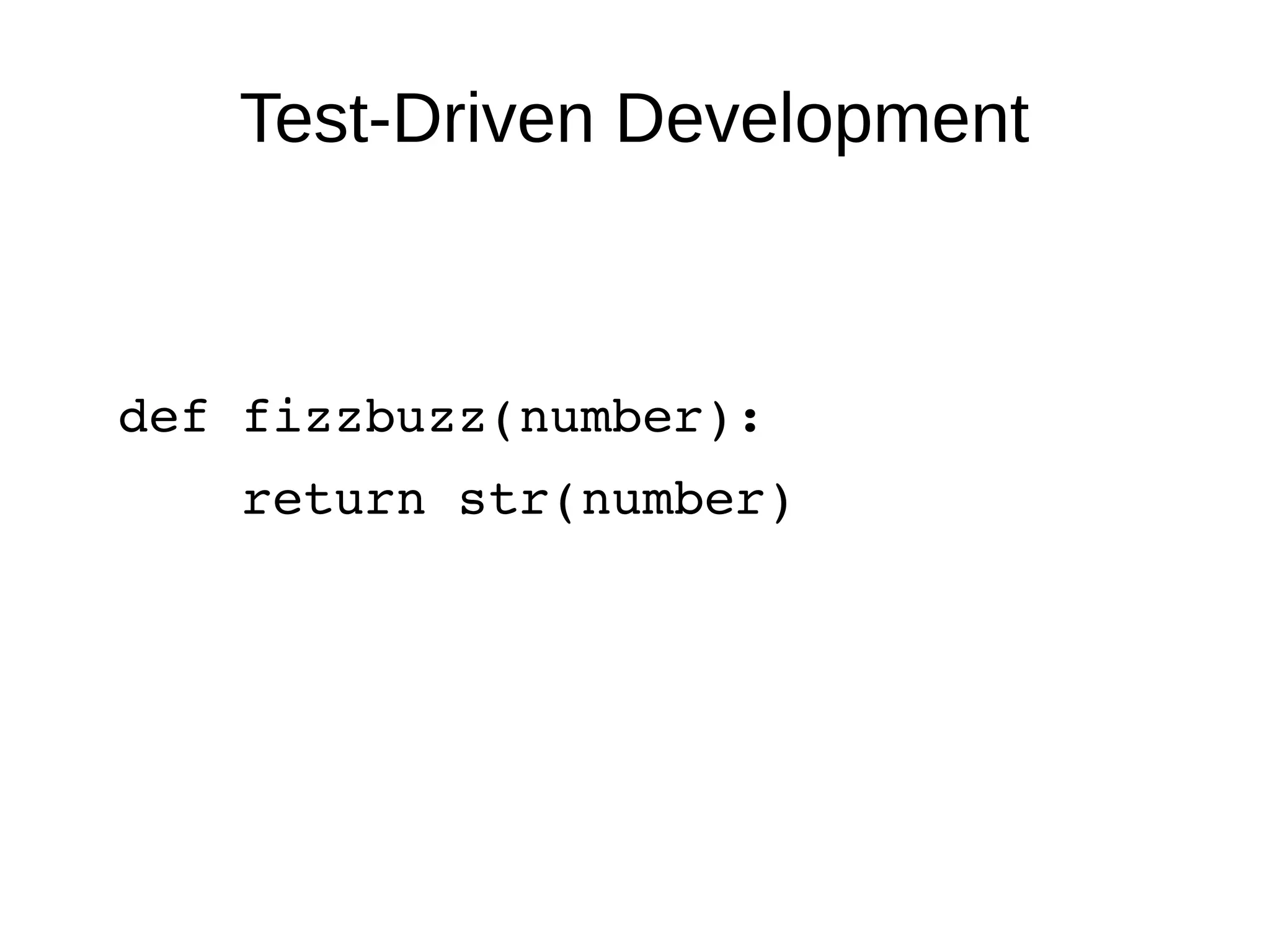
![Test-Driven Development
[…]
def test_3_returns_Fizz():
result = fizzbuzz.fizzbuzz(3)
assert_equal(result, "Fizz")](https://image.slidesharecdn.com/2014-03-19-pythoncodingdojo-140318160707-phpapp01/75/Python-Coding-Dojo-2014-03-19-10-2048.jpg)
